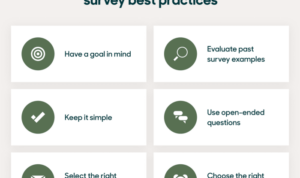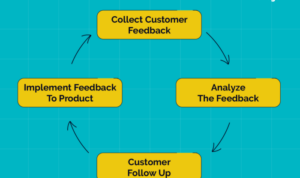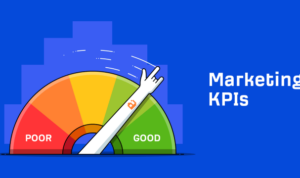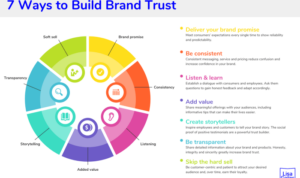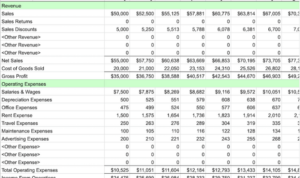Building a Sales Enablement Program sets the stage for this enthralling narrative, offering readers a glimpse into a story that is rich in detail with American high school hip style and brimming with originality from the outset.
When it comes to creating a successful sales enablement program, there are crucial components to consider, from aligning with company goals to utilizing the right technology. Let’s dive into the key strategies that can make your program a game-changer.
Introduction to Sales Enablement Programs
Sales enablement programs are strategic initiatives designed to equip sales teams with the tools, resources, and training they need to effectively engage with customers and drive revenue. These programs focus on aligning marketing, sales, and operations to ensure a seamless customer experience and improve sales performance.
Importance of Sales Enablement Programs
Sales enablement programs are crucial for businesses looking to stay competitive in today’s fast-paced market. By providing sales teams with the right training and resources, companies can increase productivity, boost sales effectiveness, and ultimately drive revenue growth. These programs also help streamline communication between different departments, leading to better collaboration and a more cohesive approach to customer engagement.
Examples of Successful Sales Enablement Programs
- HubSpot: HubSpot’s sales enablement program includes comprehensive training, personalized coaching, and access to a library of sales resources to help their teams succeed in a rapidly changing market.
- Salesforce: Salesforce has a robust sales enablement program that focuses on continuous learning and development, providing their sales teams with the tools and knowledge they need to effectively engage with customers and drive sales.
- Microsoft: Microsoft’s sales enablement program emphasizes the importance of data-driven decision-making and provides their sales teams with analytics tools and insights to help them better understand customer needs and preferences.
Building Blocks of a Sales Enablement Program: Building A Sales Enablement Program
Establishing a successful sales enablement program requires careful consideration of key components, alignment with company goals, and effective integration of technology.
Key Components of a Sales Enablement Program
- Training and Development: Providing sales teams with ongoing training and development opportunities to enhance their skills and knowledge.
- Content Creation: Developing relevant and compelling sales content, including presentations, case studies, and product information.
- Sales Process Alignment: Ensuring that the sales enablement program aligns with the company’s sales process and methodologies.
- Performance Measurement: Implementing metrics and KPIs to track the effectiveness of the program and make data-driven decisions.
- Collaboration and Communication: Facilitating collaboration between sales, marketing, and other departments to ensure a cohesive approach to sales enablement.
Aligning Sales Enablement with Company Goals and Objectives, Building a Sales Enablement Program
- Understand Business Objectives: Clearly define the company’s goals and objectives to align the sales enablement program accordingly.
- Communicate Expectations: Ensure that all stakeholders understand how the sales enablement program supports the overall goals of the organization.
- Continuous Evaluation: Regularly assess the program’s performance to identify areas for improvement and ensure alignment with company objectives.
Integrating Technology into the Sales Enablement Program
- Implement Sales Enablement Tools: Utilize technology platforms and tools to streamline processes, improve efficiency, and enhance sales team productivity.
- CRM Integration: Integrate the sales enablement program with the company’s CRM system to track customer interactions, analyze data, and improve sales strategies.
- Virtual Training Solutions: Leverage virtual training solutions and e-learning platforms to provide flexible and scalable training options for sales teams.
- Data Analytics: Use data analytics tools to gain insights into sales performance, customer behavior, and trends, allowing for informed decision-making and strategy adjustments.
Training and Development in Sales Enablement
Training and development play a crucial role in a sales enablement program as they equip sales teams with the necessary skills and knowledge to effectively engage with customers and drive sales.
Different Training Methods and Tools
- Online Training Platforms: Utilize online platforms to provide interactive training modules that can be accessed anytime, anywhere.
- Role-Playing Exercises: Conduct role-playing scenarios to practice real-life sales situations and improve communication skills.
- On-the-Job Shadowing: Allow new hires to shadow experienced sales reps to learn best practices firsthand.
- Mobile Learning Apps: Implement mobile apps that offer bite-sized training content for on-the-go learning.
Best Practices for Continuous Learning and Skill Development
- Regular Training Sessions: Schedule regular training sessions to keep sales teams updated on product knowledge and sales techniques.
- Feedback Mechanisms: Provide constructive feedback to sales reps to help them improve and grow in their roles.
- Mentorship Programs: Pair new hires with experienced mentors to provide guidance and support throughout their development.
- Continuous Improvement: Encourage a culture of continuous learning and improvement to adapt to changing market trends and customer needs.
Content Creation and Management

Creating and managing sales enablement content is crucial for the success of any sales enablement program. This process involves developing, organizing, and updating materials that support sales teams in their efforts to close deals and drive revenue. Personalized and targeted content plays a key role in engaging sales reps and equipping them with the right tools to effectively communicate with prospects and customers.
The Importance of Personalized and Targeted Content
- Personalized content helps sales reps connect with prospects on a more meaningful level, increasing their chances of closing deals.
- Targeted content ensures that sales teams have access to relevant materials that address the specific needs and pain points of their target audience.
- By tailoring content to the preferences and interests of potential customers, sales reps can deliver more impactful messages that resonate with their audience.
Tips for Organizing and Updating Content
- Establish a centralized repository for all sales enablement content to ensure easy access and consistency across the organization.
- Regularly review and update content to reflect changes in the market, product offerings, and customer preferences.
- Categorize content based on different stages of the sales cycle to help sales reps quickly locate and utilize the materials they need.
- Solicit feedback from sales teams to identify gaps in content and areas where improvements can be made to enhance effectiveness.
- Utilize analytics to track the performance of content and make data-driven decisions on what materials are most effective in driving sales outcomes.
Metrics and Analytics for Sales Enablement

In order to measure the success of a sales enablement program, it is crucial to identify key performance indicators (KPIs) that can provide valuable insights into the effectiveness of the strategies being implemented. By leveraging data and analytics, organizations can optimize their sales enablement initiatives and make data-driven decisions to improve overall sales team performance.
Key Performance Indicators (KPIs)
- Lead Conversion Rate: Tracking the percentage of leads that are successfully converted into customers can help gauge the effectiveness of the sales enablement program in moving prospects through the sales funnel.
- Sales Cycle Length: Monitoring the time it takes for a lead to progress from initial contact to closing a deal can indicate how well the program is streamlining the sales process.
- Content Engagement: Analyzing how sales content is being consumed by prospects and its impact on closing deals can provide insights into the relevance and effectiveness of the content being created.
- Training Effectiveness: Assessing the performance improvements of sales reps who have undergone training and development programs can help evaluate the impact of training on overall sales team performance.
Optimizing Sales Enablement Strategies with Data
Data and analytics can be leveraged to identify trends, patterns, and areas of improvement within the sales enablement program. By analyzing data on a regular basis, organizations can make data-driven decisions to optimize strategies, allocate resources effectively, and drive better results.
Examples of Metrics Improving Sales Team Performance
- By tracking lead conversion rates and analyzing the reasons for lost opportunities, a company was able to identify gaps in the sales process and provide targeted training to improve closing rates.
- Monitoring content engagement metrics helped a sales team understand which types of content resonated best with prospects, leading to the creation of more impactful and relevant sales materials.
- An organization used data on sales cycle length to streamline their sales process, reducing the time it took to close deals and ultimately increasing revenue and efficiency.
